Since my college years, I’ve always had the habit of reading research papers and exploring new ideas in different fields. But I never actually shared what I was learning.
That changed when I finished my thesis. I realized I didn’t just want to submit it to my university and let it collect digital dust. I wanted to put it out into the world—where the right people could read it, discuss it, and maybe even build on it.
Instagram didn’t feel right. Twitter felt too crowded. But LinkedIn, with its professional network of academics, researchers, and industry leaders, seemed like the perfect place. So I posted my thesis in a structured way—and to my surprise, the engagement was far better than I imagined.
Not only did people react, but they also commented, asked questions, and even messaged me privately.
That’s when I realized: sharing research on LinkedIn isn’t about just dropping a link, it’s about presenting your work in a way that invites interaction.

Why LinkedIn Is the Best Place for Research
LinkedIn has evolved beyond a digital résumé. Today, it’s one of the largest professional networking platforms, with over 1 billion members worldwide. Unlike other platforms, people come to LinkedIn specifically to:
- Discover professional insights.
- Stay updated on industry trends.
- Connect with researchers, entrepreneurs, and thought leaders.
For researchers, this is gold. By posting your findings on LinkedIn, you:
- Build credibility: Sharing research shows you’re active in your field.
- Reach decision-makers: Professionals and academics who can amplify or apply your findings.
- Create opportunities: Invitations to collaborate, speak at events, or even job offers.
Imagine researching sustainable energy and posting your key insights on LinkedIn. That one post could catch the attention of an energy startup founder, a policymaker, or a university professor looking for collaboration.
How to Prepare Your Research for LinkedIn
Posting your research isn’t just about copying a PDF or pasting your abstract. LinkedIn is a professional but social platform. Your post needs to be readable, engaging, and visually clear.
Here’s how to do it:
1. Simplify Your Language: Academic writing is full of jargon, but most people on LinkedIn don’t want to decode it.
❌ Instead of: “This research examines the epistemological framework underpinning...”
✅ Try: “I studied how people’s belief systems affect their everyday decision-making.”
Simplifying makes your work understandable beyond your academic niche, which dramatically increases engagement.
2. Highlight Key Takeaways: Share the “so what?” of your research.
Example: “We discovered that employees who take 15-minute outdoor breaks report 23% higher productivity.”
Readers quickly see the value of your work without needing to read the full paper.
3. Add Visuals: Use charts, graphs, or infographics.
Example: Instead of describing a growth trend, show it in a simple line graph.
Visuals increase comprehension, retention, and make posts stand out in busy feeds.
4. Provide Context: Explain why this research is relevant now.
Example: “This thesis wasn’t just about numbers—it’s about how we can design workplaces that keep employees healthier and happier.”
Context bridges the gap between data and real-world impact.
Professional Tips for a Strong Research Post
Posting research on LinkedIn is different from publishing in a journal. The goal isn’t just to share—it’s to communicate in a way that attracts attention, encourages discussion, and delivers impact.
1. Start With a Powerful Hook
The first two lines of your LinkedIn post are crucial because they appear above the “see more” fold. If you don’t grab attention there, people won’t open the rest.
That’s why starting with a bold question, an unexpected statistic, or even a counterintuitive statement makes all the difference. Instead of blending into the feed, your post immediately sparks curiosity.
2. Tell a Story, Not Just a Study
Even the most data-heavy research has a human story behind it—an observation that started it all, a challenge you faced, or a surprising moment during the process.
Turning your research into a story gives readers something to relate to. Instead of being a wall of academic information, your work becomes a narrative they can follow and remember.
3. Use the Right Format
LinkedIn offers different post types for a reason, and your choice can decide whether your research resonates.
❇️ A short text post is perfect for a single insight, while a LinkedIn Article allows you to go deep into your methodology and implications.
❇️ Carousels work well if you want to break your findings into visual slides, and a short video lets people hear directly from you.
By picking the right format, you adapt your content to how people actually consume information on LinkedIn.
4. Break Complex Research Into a Series
Your thesis or research paper likely has too many details for a single post. Instead of overwhelming people, divide your work into digestible pieces—a post on your research question, another on your method, a separate one for each key finding, and one on the broader implications.
This gives people time to reflect on each stage and keeps them curious for the next update.
5. Tag the Right People and Institutions
LinkedIn is a network-driven platform, and tagging is one of the easiest ways to expand your reach.
📬 If you worked with an advisor, co-authors, or an institution, mentioning them in your post not only gives credit but also notifies them directly.
When they engage, your research is exposed to their networks as well, creating a ripple effect.
6. Use Hashtags With Intention
Hashtags aren’t decoration—they’re how LinkedIn’s algorithm categorizes content and shows it to people searching or following certain topics.
Using a thoughtful mix of broad and niche hashtags ensures your research appears in both general conversations and specialized communities. Overdoing it with 15 tags, however, looks spammy and confuses the algorithm.
7. Add Visuals That Simplify
People process visuals much faster than text, and LinkedIn is a feed filled with competing content. By adding a chart, infographic, or even a clean cover image for your research, you make your post stand out instantly.
Visuals also help simplify complex findings—turning raw numbers into something anyone can grasp at a glance.
8. End With a Clear Call-to-Action (CTA)
Sharing research isn’t the end goal—sparking discussion is. Ending your post with a clear question or an invitation to engage tells readers how they can be part of the conversation.
Without it, most people will read, nod, and move on. With it, they’re more likely to comment, share, or even message you privately.
How I Used Circleboom to Share My Thesis on LinkedIn
When I decided to share my thesis, I knew it wasn’t just about writing a good post—it was about posting strategically. That’s when I turned to Circleboom, a publishing tool designed for professionals.

The most valuable part? It let me schedule posts for the times when my audience was most active. That alone increased my reach. But Circleboom offered more than that.
Here’s how I used it step by step:
Step #1: Log in to Circleboom Publish with your account.
If you don't already have a Circleboom account, you can get one in seconds for free!
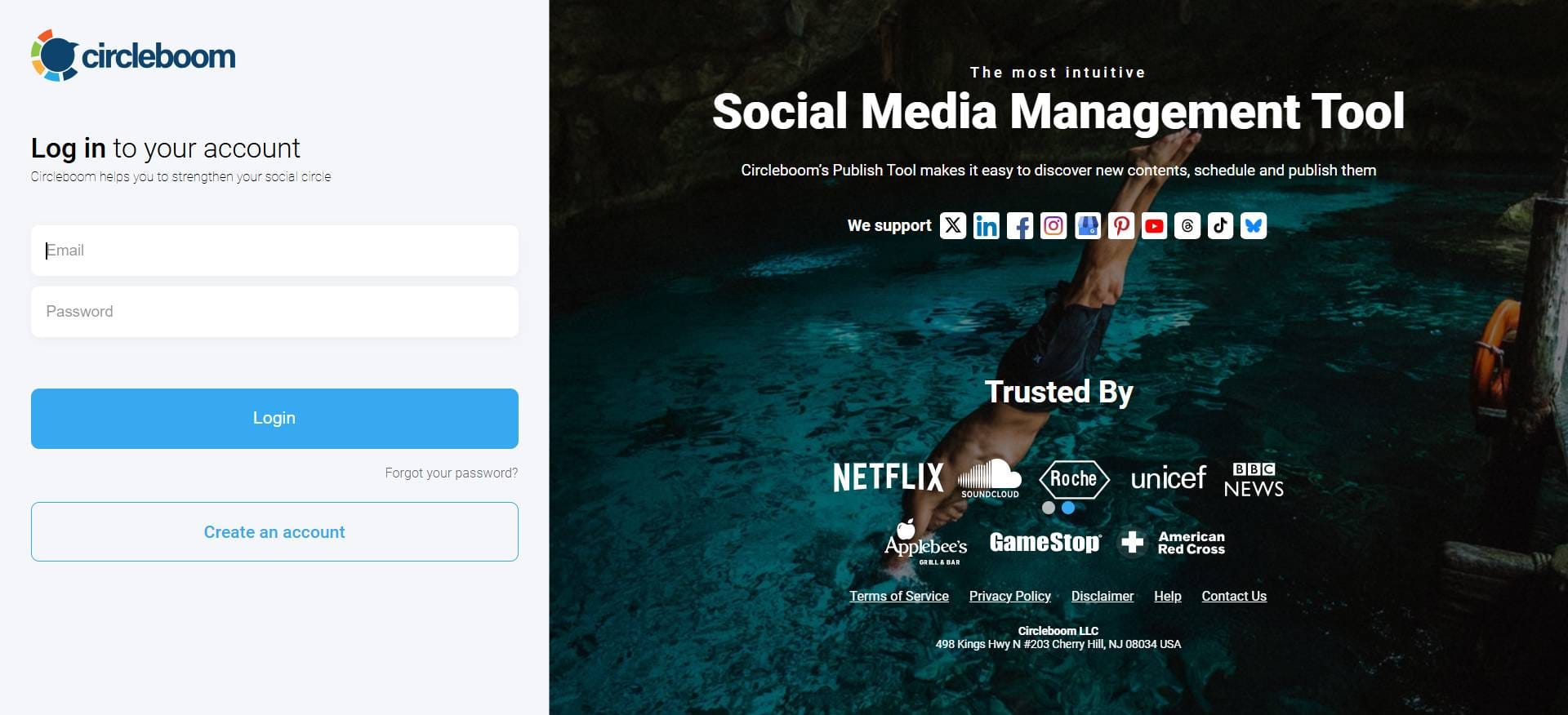
If this is your first time using Circleboom Publish, you will see several options for Twitter, Facebook, Instagram, LinkedIn, Pinterest, Bluesky, Threads, TikTok, YouTube, and Google Business Profile.
Select LinkedIn and connect your Profiles and Company Pages. You can add multiple accounts from each platform.

Step #2: You should click on the “Create New Post” button to create your social media posts. As you see, there are specific post options for each platform. You can choose “LinkedIn Specific Post or Poll,” too.
You’ll proceed to account selection.
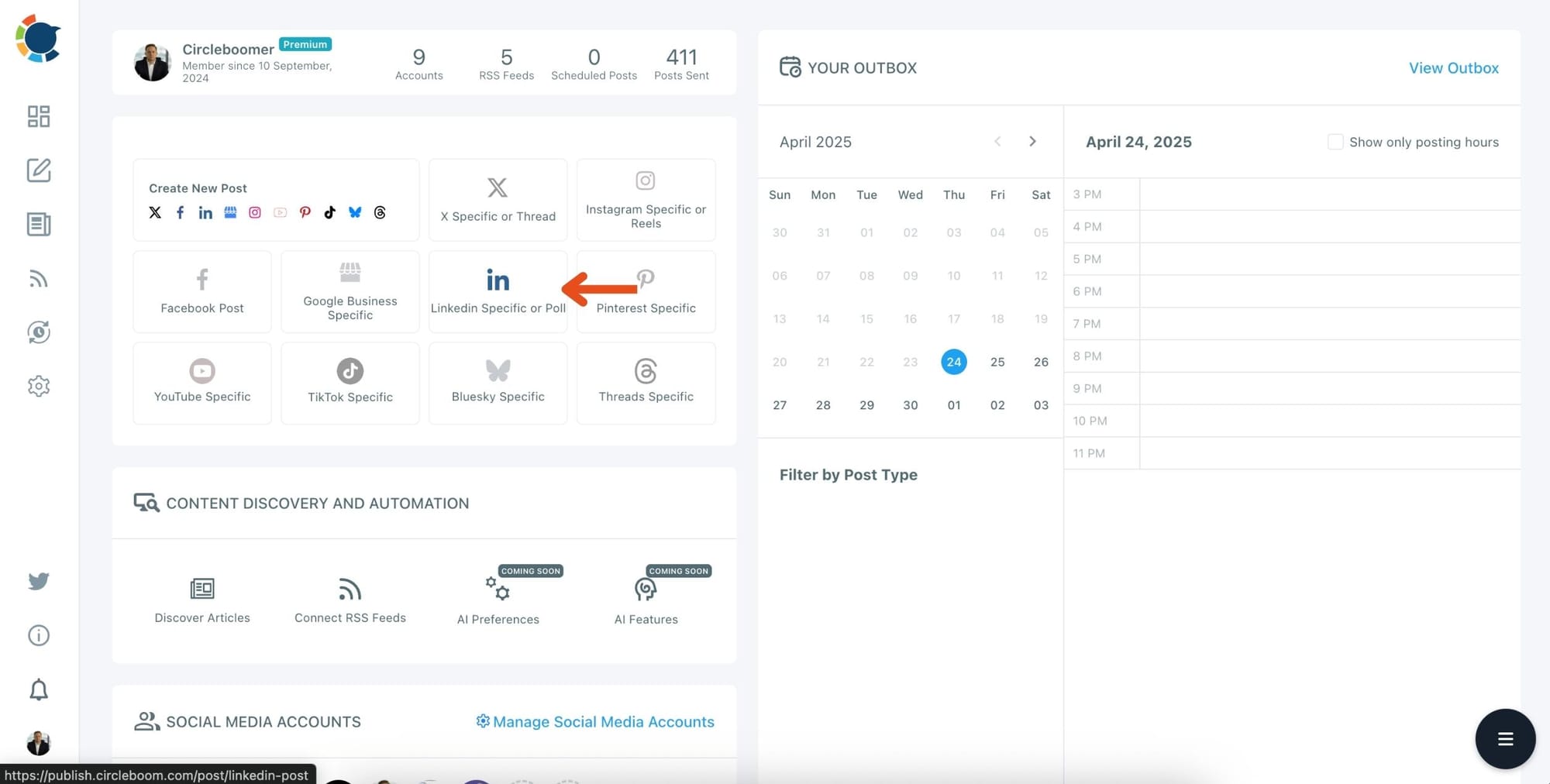
Step #3: Social media image generator on Circleboom has 5 options: Canva, Unsplash, Giphy, Carousel Generator and Google Photos. You can also upload your own files to send them directly.
Canva is where you can curate and design images as you wish. You can apply ready-made templates, filters, effects, and other kinds of elements to edit your image.
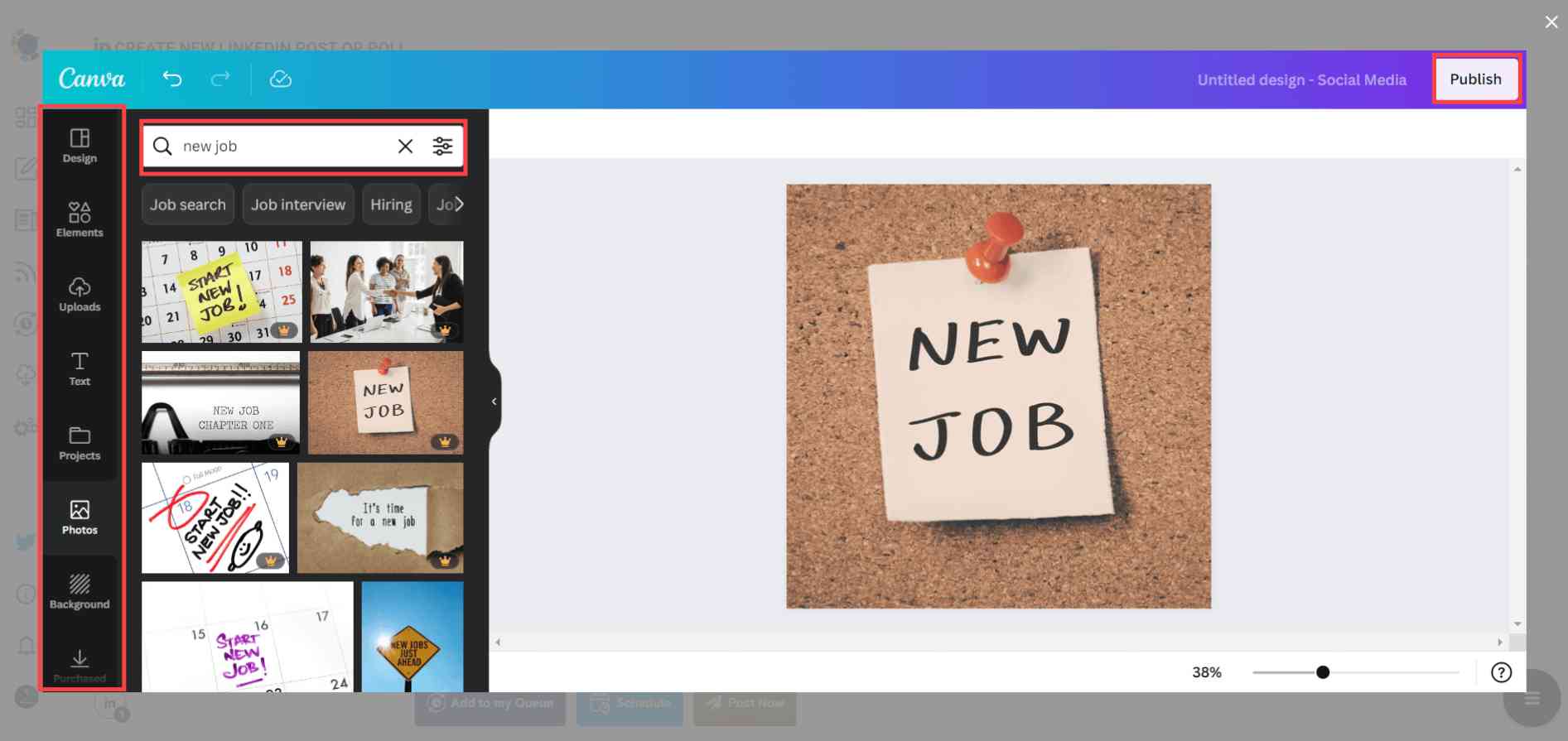
Also, you can use Unsplash to find auto-generated, high-quality images to share on your LinkedIn accounts.
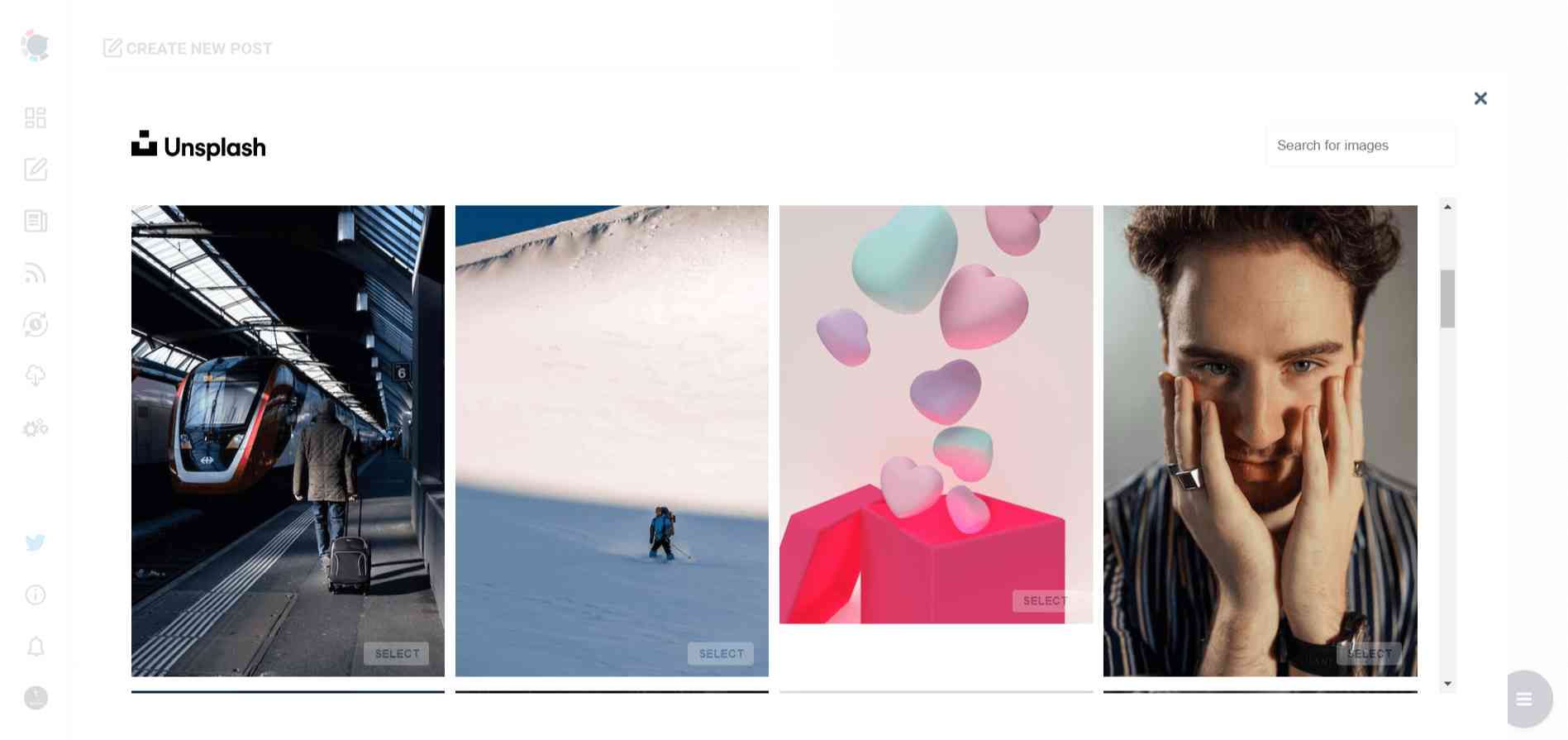
Giphy is where you can generate high-quality GIF images for your auto-generated LinkedIn posts.
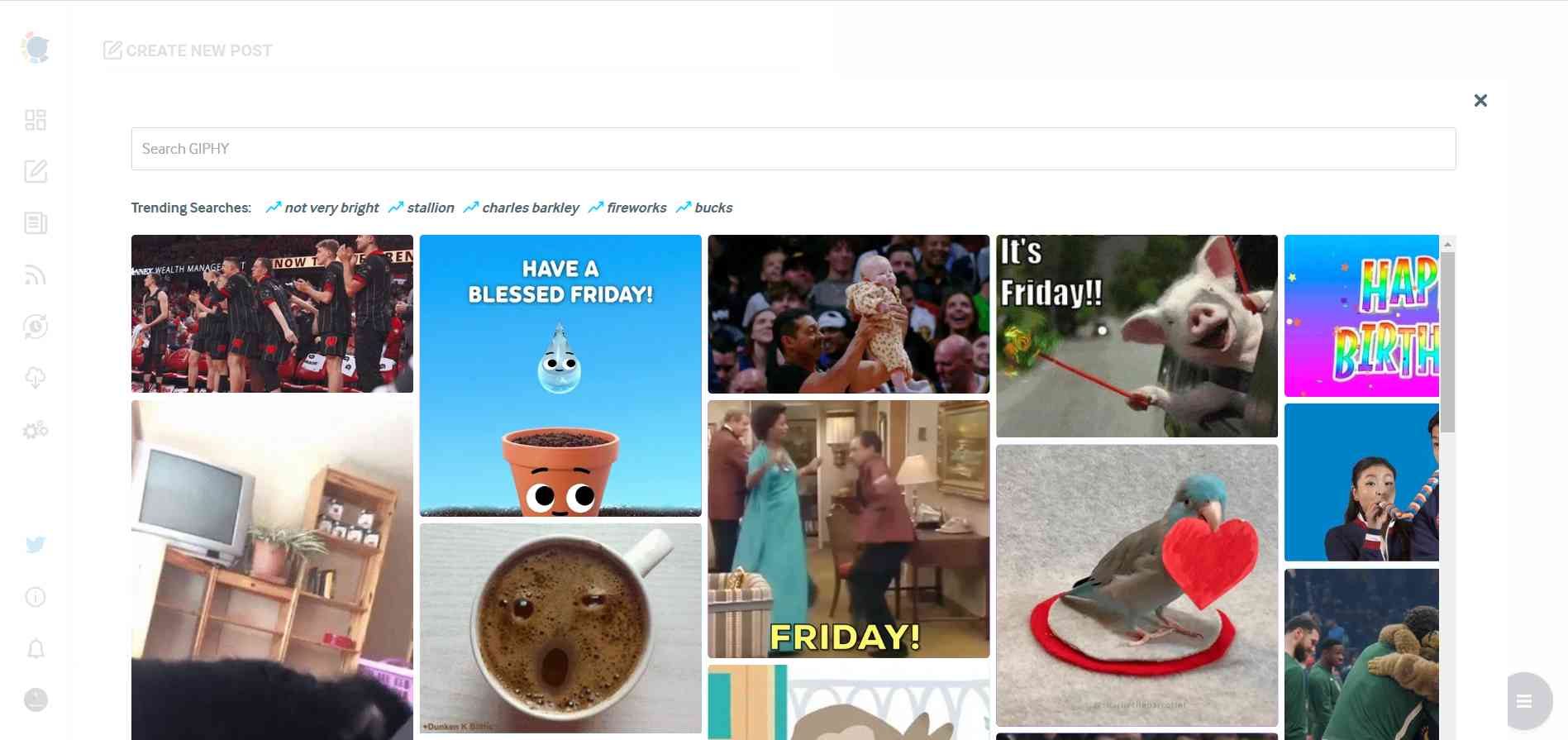
Step #4: Next station is the social media text generator.
Thanks to OpenAI integration, you can create auto-generated social media descriptions, captions, texts, and all kinds of texts enriched by AI-generated hashtags, emojis, and other extras like grammar checks or translations.
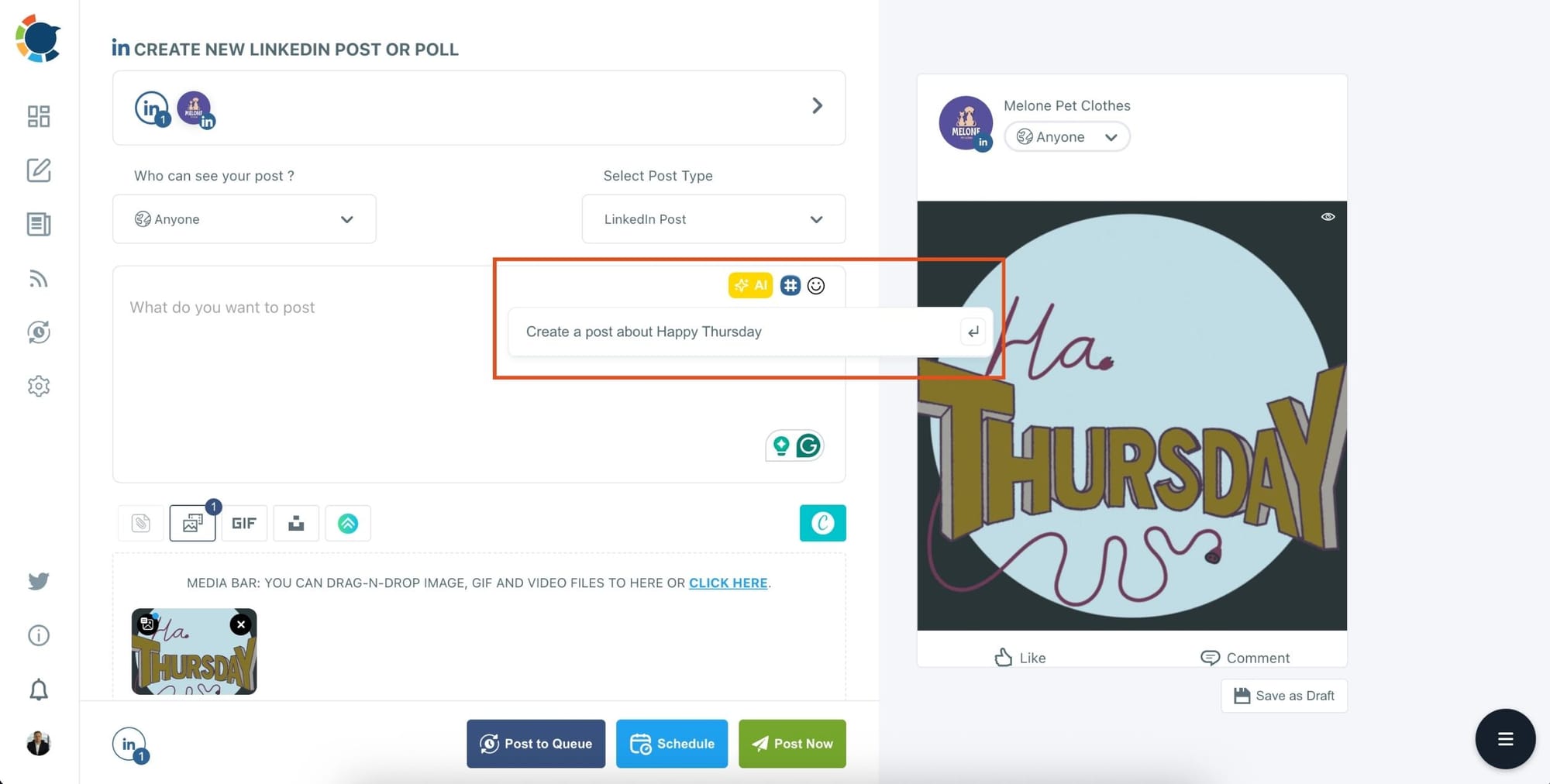
You can define the style of your words, warmth, etc., on Circleboom Publish.
And, you can enrich your auto-generated LinkedIn posts with extras.
Step #5: You can also use Circleboom Publish’s native LinkedIn hashtag generator to find, create, and save relevant and popular hashtag groups for your auto-generated LinkedIn content.
You can find the best hashtags for your LinkedIn posts with the LinkedIn tag finder.
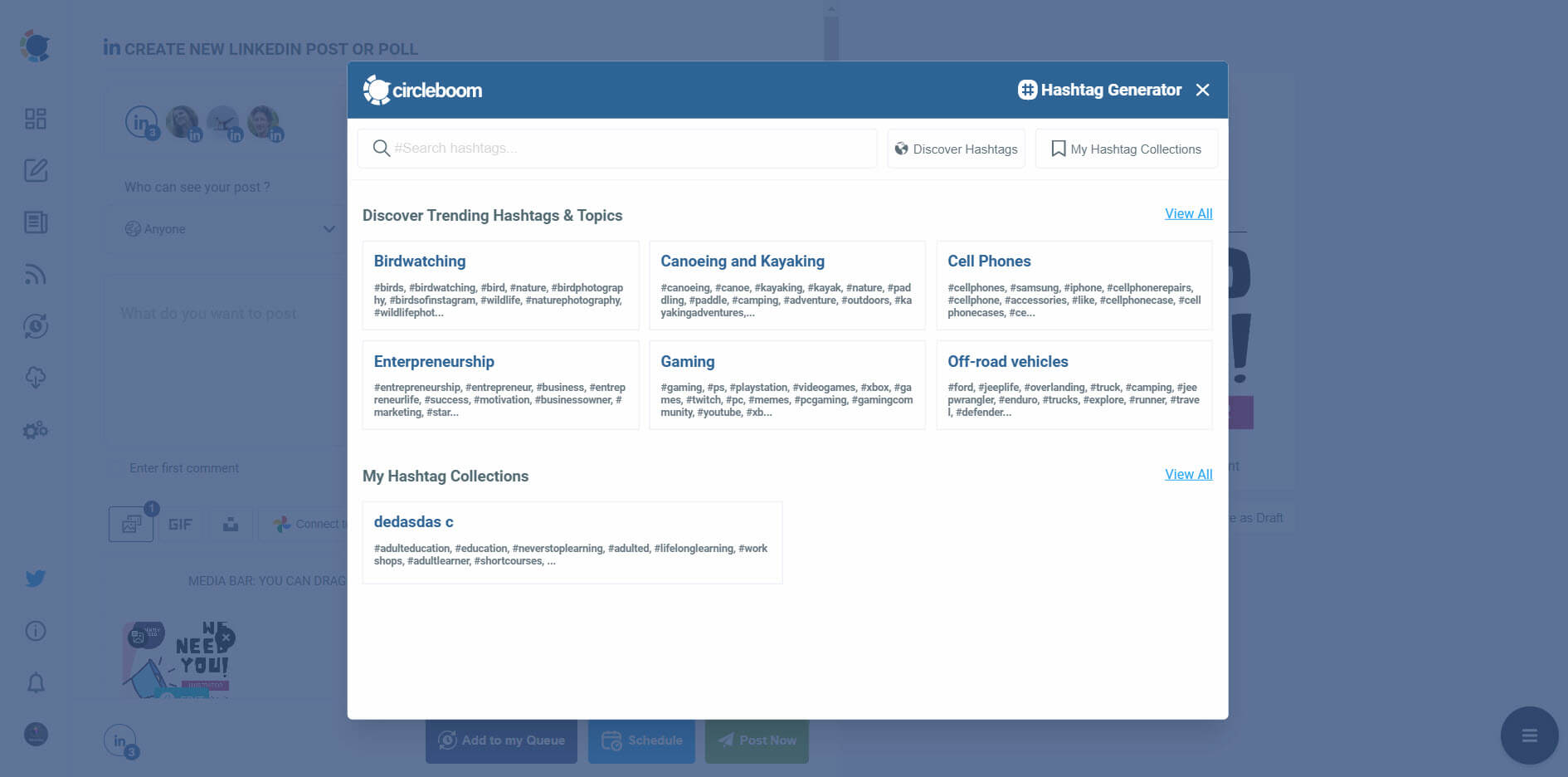
Step #6: Once you generate your LinkedIn posts, you can share them immediately. Alternatively, you can schedule them for the future.
You can also set time intervals and automate your LinkedIn posts.
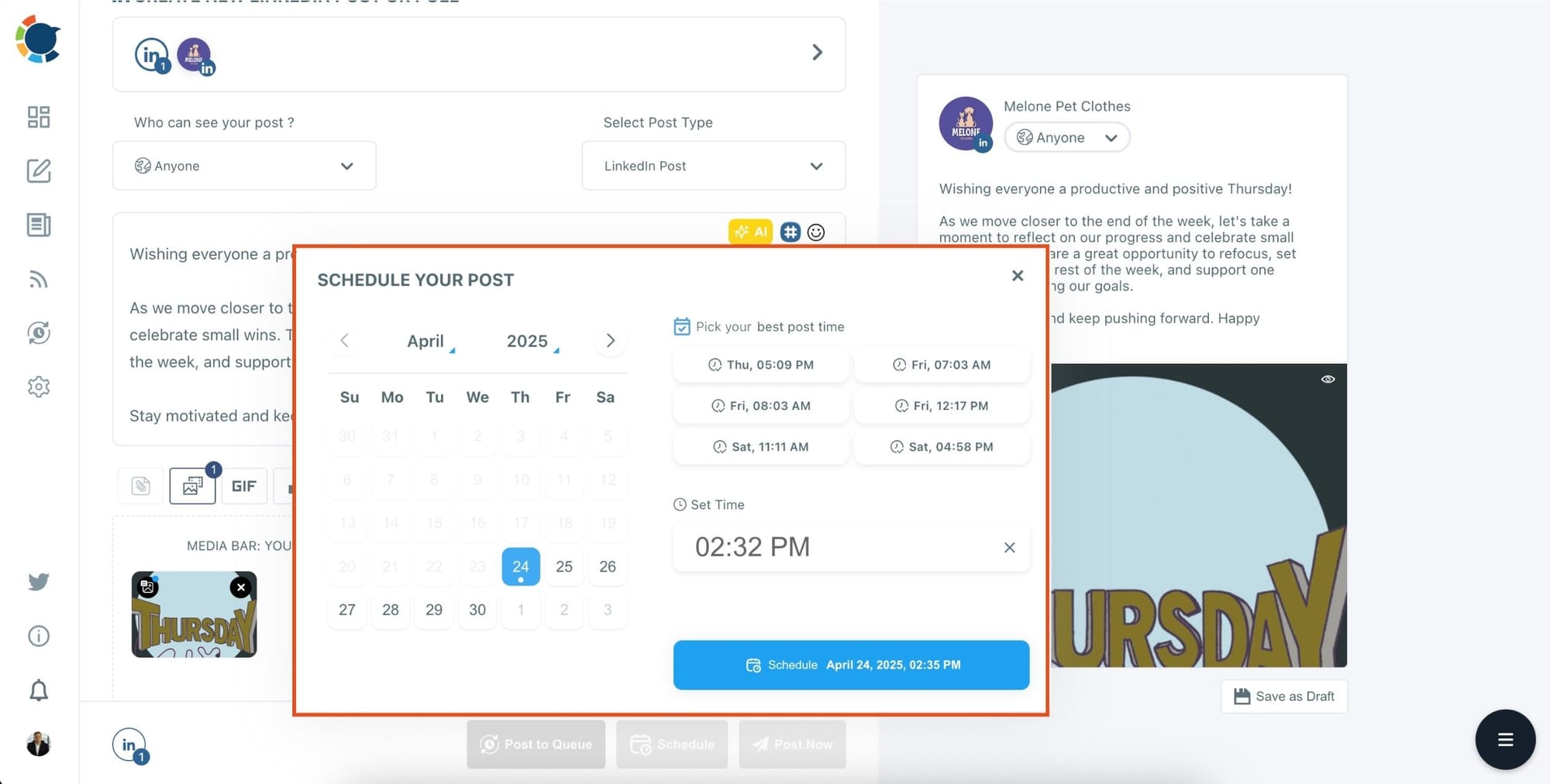
✅ Result: People didn’t just “like” the posts—they commented, shared, and messaged me privately about collaboration opportunities.
Common Mistakes to Avoid
Even with good research, some mistakes kill engagement:
❌ Posting PDFs without explanation.
❌ Using overly academic tone.
❌ Posting at random times when your audience is offline.
❌ Ignoring comments after publishing.
Why Sharing Research Matters
Your research deserves more than to sit in a library archive. Posting it on LinkedIn expands its reach, turns you into a thought leader in your field, and creates opportunities you might never expect.
With smart preparation—and with tools like Circleboom to help—you can make sure your work isn’t just read, but discussed, shared, and acted on.
✅ Don’t let your thesis or research stay hidden. Post it on LinkedIn, frame it for engagement, and watch your work create real-world impact.



